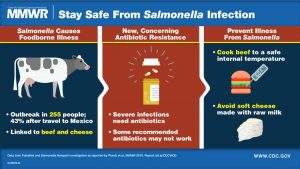Scientists at the University of Virginia School of Medicine have learned how a foodborne illness takes hold.
 They were looking into E.coli and how it seeks out the most oxygen-free parts of the human colon to cause the worst possible infection in the body.
They were looking into E.coli and how it seeks out the most oxygen-free parts of the human colon to cause the worst possible infection in the body.
According to a release, this new discovery shows how the pathogen knows where and when to begin colonizing the colon on the way to making a person sick.
E.coli reportedly can recognize the low-oxygen environment of the large intestine, which is where it can give itself the best odds of establishing a robust infection.
“Bacterial pathogens typically colonize a specific tissue in the host. Therefore, as part of their infection strategies, bacterial pathogens precisely time deployment of proteins and toxins to these specific colonization niches in the human host,” said researcher Melissa Kendall, PhD, of the UVA Department of Microbiology, Immunology and Cancer Biology. “This allows the pathogens to save energy and avoid detection by our immune systems and ultimately cause disease. By knowing how bacterial pathogens sense where they are in the body, we may one day be able to prevent E. coli, as well as other pathogens, from knowing where it is inside a human host and allow it to pass through the body without causing an infection.”
Humans naturally have E.coli in the colon, and most strains do not cause harm.
However, there are several strains that can cause cramps, diarrhea, vomiting, kidney failure and even death, especially in children.
Oxygen diffuses from the intestinal tissues into the gut, and the small intestine contains comparably higher levels than the large E.coli.
The pathogen waits until it has reached the lower oxygen large intestine before trying to establish an infection.
E.coli has a vital asset in the form of RNA, which activates particular genes when oxygen levels get low enough.
That is when the infection can become established, at which time, the bacteria begin to manufacture Shiga toxins, which are harmful to people.
It is believed other bacterial pathogens, like Shigella and Salmonella, may use a similar control mechanism, but more research is needed to establish that.
The findings concerning E.coli have been published in the scientific journal PNAS.









